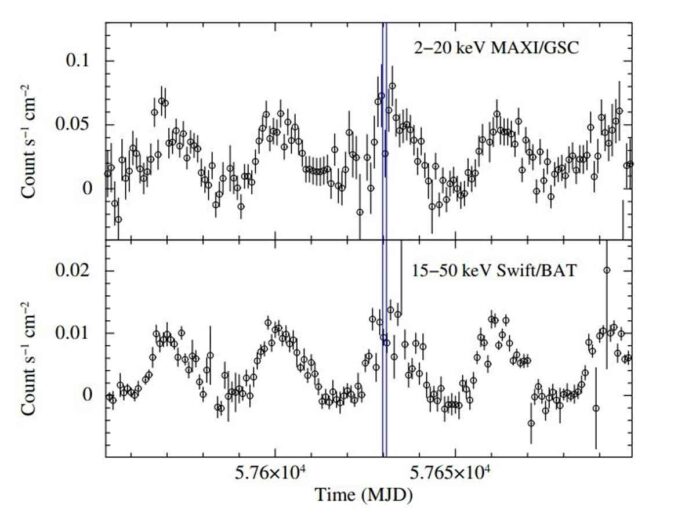Indian astronomers have used the AstroSat spacecraft to investigate LMC X-4. It is a high-mass X-ray binary system. The study’s findings were published on arXiv.org on December 2. The study provided critical insights into the properties of LMC X-4. The study has also shed light on the quasi-periodic oscillations that the LMC X-4 experiences.
A normal star or a white dwarf transfers mass to a compact neutron star or a black hole in X-ray binaries. Astronomers classify them as low-mass X-ray binaries (LMXBs) or high-mass X-ray binaries (HMXBs). This classification is based on the mass of the companion star (HMXBs).
LMC X-4 is a highly luminous and eclipsing HMXB in the Large Magellanic Cloud. It is located 163,000 light years away (LMC) from Earth. The system is made up of a neutron star that is about 25% more massive than the sun. It spins at a rate of 13.5 seconds while accreting matter from an OB star. The LMC X-4 X-ray eclipse lasts about five hours and occurs every 33.6 hours.
The X-ray emission from LMC X-4 shows intensity variation. It is because of a precessing tilted accretion disc that obscures direct X-ray emission from the compact object on a regular basis. The source produces large X-ray flares with quasi-periodic variability at frequencies of 0.651.35 and 2 20 MHz. Recent observations have revealed that LMC X-4 exhibits 27 MHz quasi-periodic oscillation (QPO) in its X-ray spectrum.
A team of astronomers led by Rahul Sharma of the Raman Research Institute in Bangalore, India, examined LMC X-4 with AstroSat’s Large Area X-ray Proportional Counter (LAXPC) and Soft X-ray Telescope (SXT) instruments. Sharma wanted to learn more about its properties and QPO behaviour.
The pulse period of the LMC X-4 was determined to be 13.501606 seconds. Energy-dependent pulse profiles were also identified. The observations have revealed an energy-dependent 26 MHz QPO in the 3-40 keV energy range.
The pulse profiles in the soft X-ray energies (3-6 keV and 6-12 keV) had complex dip-like features. It could be attributed to accretion stream absorption. At higher energies, these profiles are single-peaked, smooth and almost sinusoidal in behaviour.
The astronomers observed that the energy spectrum of LMC X-4 is generally described by a model consisting of a power law with a high-energy cutoff. They used a power law continuum (about 0.8) and a high energy cutoff of about 16 keV to model the 0.5-25 keV energy spectrum.
In a broad energy range of 3-40 keV, the QPO root mean square (RMS) was found to increase with energy with a slope of about 0.06% per keV. This result indicates that the cold disc component is not driving the aperiodic oscillations.
The study also discovered that LMC X-4 has a luminosity of 200 undecillion erg/s at 0.5-25 keV. It has a velocity of 20,000 km/s at its inner accretion disc.
More information: Rahul Sharma et al, Broadband mHz QPOs and spectral study of LMC X−4 with AstroSat, arXiv (2022). DOI: 10.48550/arxiv.2212.01003

